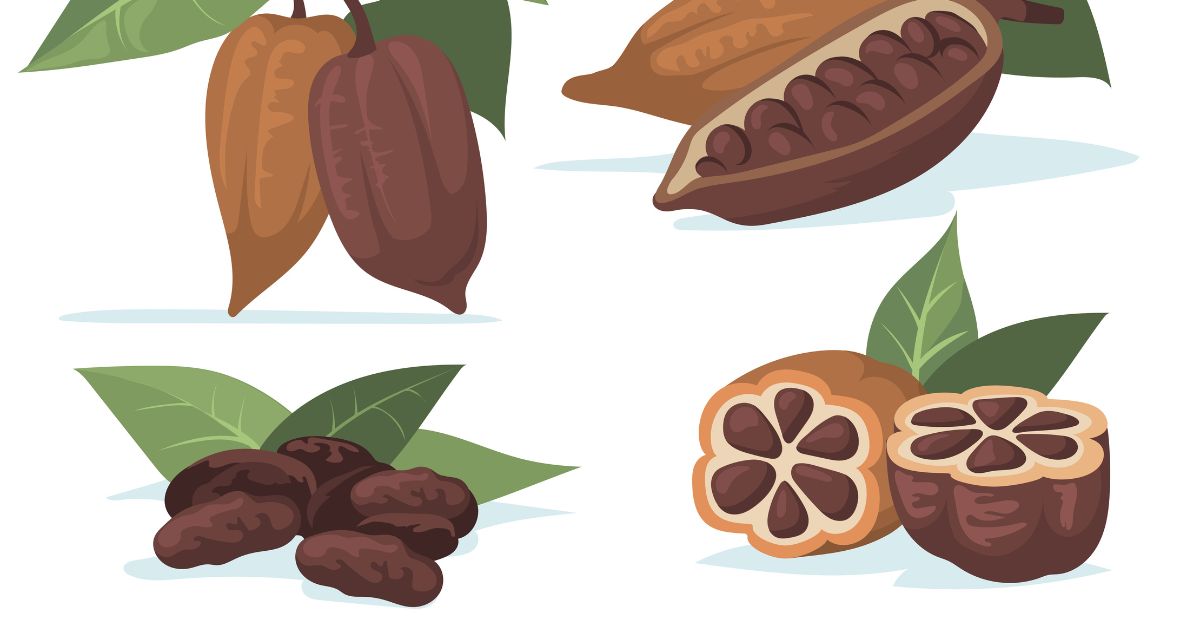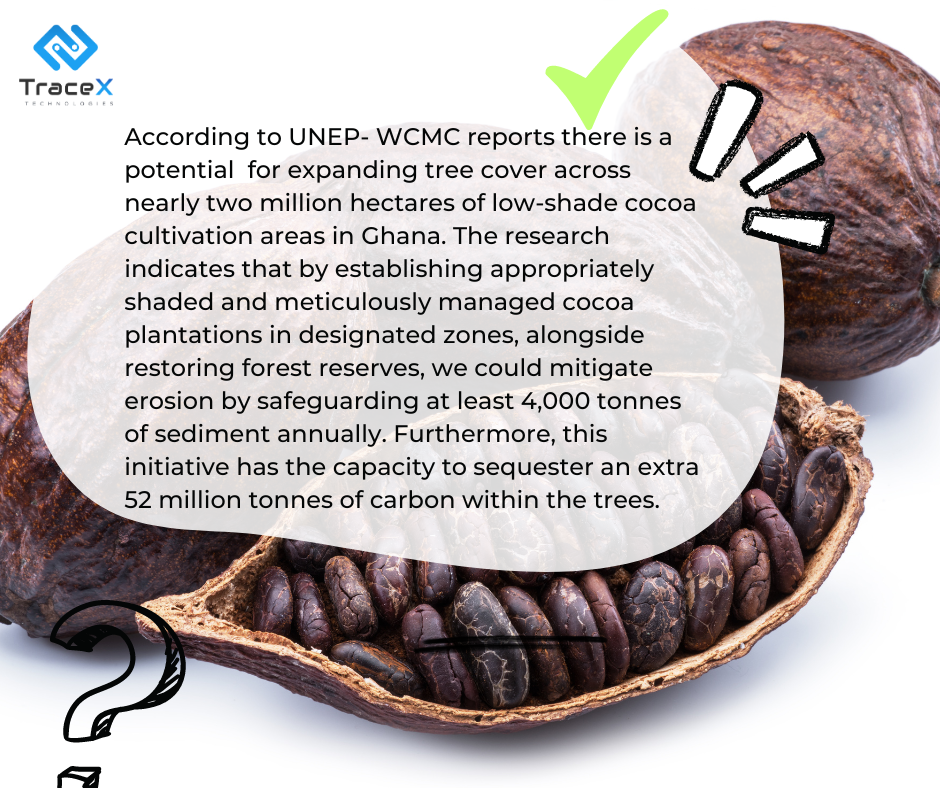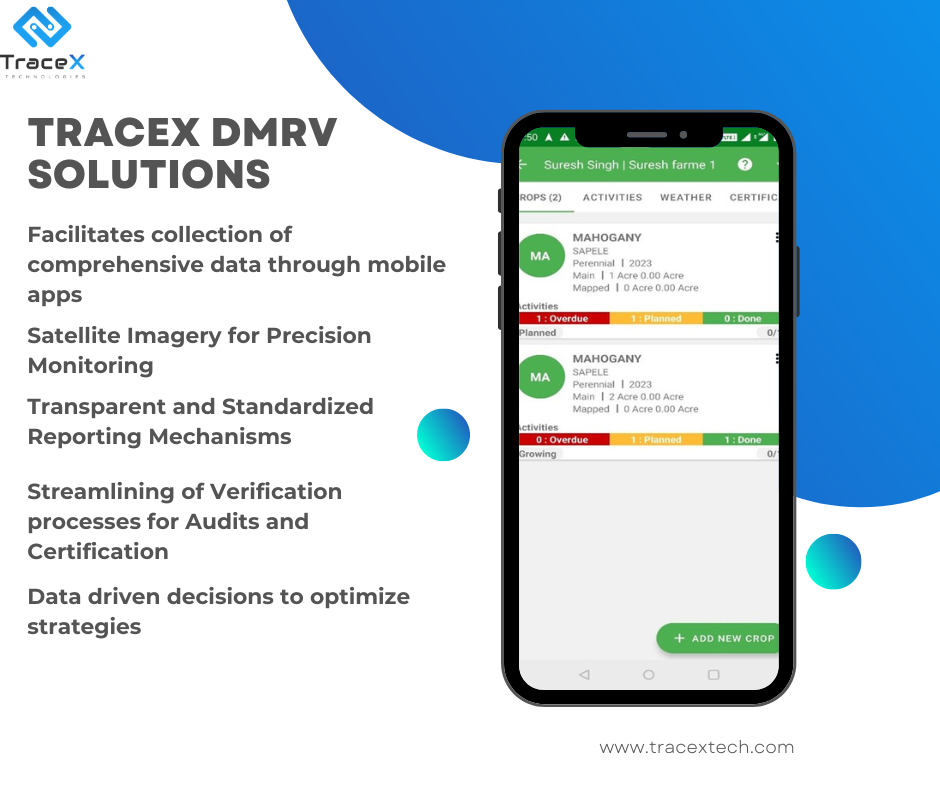Contact: +91 99725 24322 |
Menu
Menu
Quick summary: Explore the sustainable practices and environmental benefits of cocoa agroforestry in Ghana. Learn how shaded cocoa plantations contribute to carbon storage, biodiversity conservation, and soil erosion prevention, fostering a more resilient and eco-friendly cocoa industry.

Cocoa agroforestry in Ghana involves the cultivation of cocoa trees alongside other tree species, creating a biodiverse and sustainable farming system. This approach enhances soil fertility, biodiversity, and resilience to pests and diseases.
In this West African nation, cocoa cultivation intertwines with diverse tree species, creating a symbiotic ecosystem that promotes biodiversity, soil health, and sustainable livelihoods. With Ghana being one of the world’s leading cocoa producers, this agroforestry practice not only contributes to the nation’s economy but also serves as a model for environmentally conscious farming methods.
Ghana is the world’s second-largest cocoa producer, generating more than 800,000 tons of cocoa beans per year on average.
Cocoa holds significant importance to the Ghanaian economy, contributing substantially to the country’s GDP and providing livelihoods for millions of farmers and their families. It is a major export commodity, generating foreign exchange earnings vital for economic growth and development.
Agroforestry practices integrate trees into agricultural landscapes, promoting ecological balance and productivity. In cocoa agroforestry, farmers intercrop cocoa with shade trees, such as plantains, timber trees, or fruit trees. These shade trees provide various benefits, including improved microclimatic conditions for cocoa growth, protection from extreme weather events, and additional sources of income through timber or fruit sales. Additionally, agroforestry helps mitigate climate change by sequestering carbon in trees and enhancing ecosystem resilience. Overall, cocoa agroforestry in Ghana exemplifies a sustainable approach to cocoa production that balances environmental conservation with economic development.
Of more than 2.3 million hectares of cocoa growing lands in Ghana, nearly two million hectares are estimated to be under low or no shade growing conditions.
Discover the transformative impact of agroforestry in commodity supply chains.
Learn how sustainable practices enhance resilience and yield quality.

Cocoa cultivation in Ghana has a rich historical context, dating back to the late 19th century when it was introduced by colonial powers. Initially, cocoa farming was dominated by large-scale plantations, but after Ghana gained independence in 1957, there was a shift towards smallholder farming. Over time, cocoa became a crucial component of Ghana’s agricultural landscape and economy, shaping rural livelihoods and national development strategies.
Agroforestry systems offer numerous benefits for cocoa production. By integrating shade trees with cocoa plants, agroforestry enhances soil fertility, conserves water, and reduces erosion. The diverse canopy created by shade trees provides a suitable microclimate for cocoa trees, protecting them from harsh sunlight and promoting healthy growth. Agroforestry also diversifies farmers’ income sources by allowing them to harvest timber, fruits, or other products from shade trees while waiting for cocoa yields to mature.
Crucially, cocoa plantations with adequate shading exhibit reduced peak temperatures, fostering a more consistent microclimate. Additionally, they can sequester up to 2.5 times more carbon compared to unshaded plantations, while also providing enhanced biodiversity support.
Cocoa agroforestry has positive environmental and social impacts. Ecologically, it fosters biodiversity, preserves habitats, and mitigates deforestation by discouraging the expansion of monoculture cocoa farms. Socially, it supports rural communities by providing sustainable livelihoods, preserving traditional knowledge, and strengthening community cohesion through shared management of agroforestry systems. Additionally, agroforestry contributes to climate change adaptation and resilience by enhancing ecosystem services and carbon sequestration in vegetation and soils. Overall, cocoa agroforestry represents a sustainable approach to cocoa cultivation that balances environmental conservation with social and economic development.
Cocoa agroforestry significantly impacts farmers’ livelihoods by providing diversified income streams, increased resilience to environmental fluctuations, and improved household food security. By integrating shade trees and other crops with cocoa, farmers can generate additional income from timber, fruits, or other agroforestry products. This diversification reduces dependence on cocoa as the sole source of income and mitigates risks associated with price fluctuations or crop failures. Furthermore, agroforestry practices enhance soil fertility and ecosystem services, leading to sustained cocoa yields and long-term income stability for farmers.
Cocoa agroforestry plays a vital role in rural development and poverty alleviation by creating employment opportunities, empowering smallholder farmers, and fostering community development. The cultivation of cocoa and associated agroforestry products stimulates economic growth in rural areas, generating income that circulates within local economies. Additionally, agroforestry enhances social cohesion and collective action among farmers through shared management of resources and knowledge exchange, contributing to resilient and self-reliant rural communities.
Smallholder cocoa farmers in Ghana face challenges in accessing reliable agricultural inputs and up-to-date best practices. Existing extension services often cease once funding ends, leaving farmers without ongoing support. To sustainably improve yield quality and quantity, farmers require continuous access to agricultural, financial, and informational resources.
However, there are opportunities for smallholder farmers to overcome these challenges through supportive policies, capacity-building programs, market linkages, and innovative financing mechanisms. Agroforestry certification schemes and premium prices for sustainably produced cocoa offer incentives for farmers to adopt environmentally friendly practices while improving their income and livelihoods.
Technology solutions empower cocoa farmers to adopt more sustainable and resilient agroforestry practices, leading to enhanced environmental conservation, increased productivity, and improved livelihoods.
TraceX’s digital MRV solutions represent a paradigm shift in cocoa agroforestry by enabling precision monitoring, transparent reporting, and evidence-based decision-making. By harnessing the power of digital technologies, TraceX is driving positive change across the cocoa supply chain, promoting environmental stewardship, social equity, and economic viability.
Learn more about the game-changing technology driving sustainable and efficient management of agroforestry projects.
Discover how TraceX’s Digital MRV solutions are revolutionizing agroforestry practices

Government policies and programs supporting cocoa agroforestry aim to promote sustainable cocoa production, enhance farmer livelihoods, and conserve natural resources. In countries like Ghana and Ivory Coast, where cocoa is a major export commodity, governments have implemented initiatives such as reforestation programs, agroforestry extension services, and subsidies for shade tree planting. These policies encourage smallholder farmers to adopt agroforestry practices by providing technical assistance, financial incentives, and access to markets. Additionally, governments collaborate with stakeholders to develop and enforce regulations on land use, deforestation, and pesticide use to ensure the long-term viability of cocoa agroforestry systems.
NGOs and international organizations play a crucial role in promoting sustainable cocoa production through capacity-building, research, advocacy, and partnerships. Organizations such as the World Cocoa Foundation, Rainforest Alliance, and Fairtrade work closely with cocoa-producing communities to promote agroforestry, train farmers in sustainable practices, and certify cocoa as environmentally and socially responsible. These initiatives help smallholder farmers improve their livelihoods, protect ecosystems, and access premium markets for sustainably produced cocoa.
Success stories and case studies highlight the positive impact of cocoa agroforestry on farmer incomes, environmental conservation, and community development. For example, the Cocoa Livelihoods Program in Ghana has helped thousands of smallholder farmers adopt agroforestry practices, resulting in increased cocoa yields, diversified income sources, and improved soil health. Similarly, the agroforestry systems implemented by cooperatives in Ivory Coast have boosted farmer resilience to climate change, reduced deforestation, and enhanced biodiversity in cocoa landscapes. Such initiatives demonstrate the potential of cocoa agroforestry to achieve both economic and environmental sustainability in cocoa-producing regions.
Emerging trends in cocoa agroforestry research and innovation focus on enhancing productivity, resilience, and sustainability in cocoa production systems. Researchers are exploring novel techniques such as genomic selection to develop cocoa varieties with improved disease resistance, yield potential, and flavor profiles. Additionally, there is growing interest in precision agriculture technologies, remote sensing, and data analytics to optimize farm management practices and resource use efficiency in cocoa agroforestry. Furthermore, interdisciplinary studies are investigating the socio-economic impacts of agroforestry on farmer livelihoods, gender dynamics, and community resilience, shaping policies and programs for inclusive and equitable cocoa value chains.
Addressing challenges such as climate change, market volatility, and land tenure issues requires multi-stakeholder collaboration and integrated approaches. Climate-smart agroforestry practices, including agroforestry diversification, soil conservation measures, and water management strategies, can help cocoa farmers adapt to changing climatic conditions and mitigate environmental risks. Strengthening farmer organizations, promoting fair trade practices, and improving market access through value chain partnerships enhance smallholder resilience to market fluctuations and ensure equitable distribution of benefits along the cocoa supply chain. Furthermore, addressing land tenure issues through participatory land-use planning, tenure security initiatives, and community-based natural resource management fosters sustainable land stewardship and social cohesion in cocoa-producing regions.
Opportunities for collaboration and investment in cocoa agroforestry abound across various sectors and stakeholders. Public-private partnerships can mobilize resources, expertise, and technology transfer to scale up sustainable cocoa production and supply chain innovations. Financial institutions and impact investors can provide tailored financing mechanisms, credit facilities, and risk-sharing instruments to support smallholder farmers’ adoption of agroforestry practices and facilitate market linkages. Moreover, collaboration between research institutions, NGOs, governments, and the private sector can drive innovation, knowledge sharing, and capacity building in cocoa agroforestry, unlocking opportunities for inclusive growth, environmental conservation, and poverty reduction in cocoa-producing regions.
In conclusion, cocoa agroforestry stands at the forefront of sustainable agriculture, offering a holistic approach that balances economic prosperity with environmental conservation and social development. Through the integration of shade trees and diversified crops, cocoa agroforestry not only enhances farmer livelihoods but also contributes to biodiversity conservation, soil fertility improvement, and climate change adaptation. Despite facing challenges such as climate variability, market volatility, and land tenure issues, cocoa agroforestry presents immense opportunities for innovation, collaboration, and investment across various sectors. By harnessing emerging trends in research and technology, addressing systemic challenges through multi-stakeholder partnerships, and leveraging inclusive business models, the cocoa industry can realize its potential as a driver of sustainable development. Together, we can work towards a future where cocoa agroforestry thrives as a model of resilient and regenerative agriculture, ensuring the well-being of farmers, ecosystems, and communities for generations to come.
